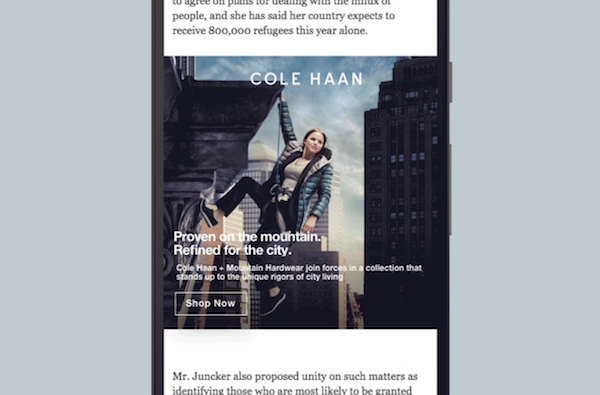Google brings programmatic to native ads
Programmatic, while still the source of much confusion, is a now a huge part of the digital advertising ecosystem.
Programmatic, while still the source of much confusion, is a now a huge part of the digital advertising ecosystem.
Programmatic, while still the source of much confusion, is a now a huge part of the digital advertising ecosystem.
In fact, according to eMarketer, this year, two-thirds of digital display ad spend in the United States will be programmatic.
Because of the demand for programmatic, popular online services like Spotify are embracing programmatic ad offerings, and companies are now working to extend programmatic concepts to traditional offline channels, like direct mail.
Last week, at its DoubleClick Leadership Summit, Google announced that DoubleClick publishers can make all or some of their web and app native ad inventory available through DoubleClick, and advertisers can purchase that inventory programmatically through DoubleClick Bid Manager.
Several months ago, Google launched programmatic native ads for publishers and advertisers that already had a direct relationship. The New York Times was one of the publishers participating in the initial launch. Its Frame Flex offering for mobile increased click-through rates 40 to 50% over standard 300×250 ad units.

DoubleClick native programmatic asks advertisers to supply creative components, such as headline and body text, and DoubleClick automatically formats the content for the publisher’s site and the device the viewer is using. The native ad units come in two flavors: a traditional banner slot and a responsive fluid ad slot.
Google says that more than 200 publishers are signed up to offer programmatic native ads through DoubleClick.
While programmatic has the potential to help advertisers and publishers scale their use of native ads, it remains to be seen whether programmatic native will deliver the same experience and results as non-programmatic native.
Native ads increasingly generate a sizable portion of ad revenue for numerous high-profile publishers, and to capitalize fully on the native ad opportunity, a number of them have built internal teams to help their advertisers develop campaigns centered around native ads. Because they are more tightly integrated with the user experience, the native ads typically come at a premium cost.
As The New York Times recently detailed, “the resulting arrangements are more client-agency than advertiser-publisher.” According to the Financial Times’ Chief Commercial Officer, Jon Slade, “We have the basic building blocks of a full-service agency.”
Native ads that are purchased programmatically might resemble the kinds of ads publishers are crafting as far as formatting is concerned, but there’s an argument to be made that they aren’t the same thing because they’re not crafted for a specific site and audience.
If publishers and advertisers embrace programmatic native offerings like DoubleClick’s in the name of scale, publishers might introduce unwanted commoditization to the native space, and advertisers might find that they ultimately don’t get the results they expect.